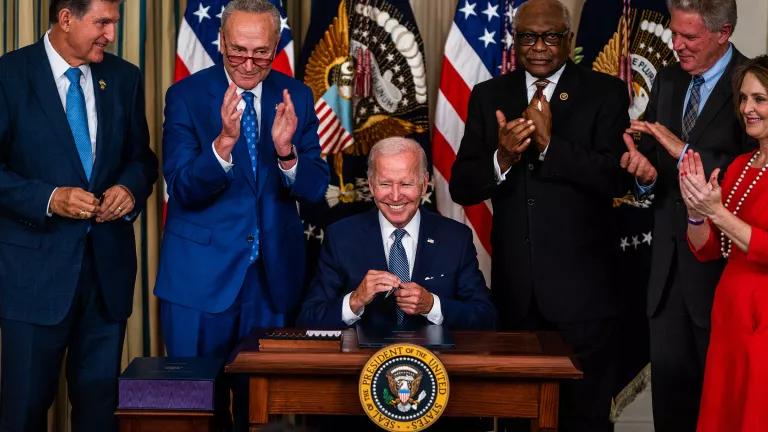Lawmakers Propose Modern Approach to U.S. Mining
Newly introduced legislation tackles the historic harms and inequities of U.S. mining law and charts a path forward on important domestic mineral supplies.
Representative Raul Grijalva and Senator Martin Heinrich today are introducing legislation to tackle the historic harms and inequities of U.S. mining law and to chart a path forward on mineral supplies as we look to rapidly electrify our economy.
Current U.S. mining law is a vestige of the last gold rush. The General Mining Law was written in 1872, and still governs mining on federal lands today. It was a tool of government-sponsored settlement meant to spur westward expansion and give prospectors a nearly free claim to do whatever was necessary to access and extract the valuable minerals they found underground.
More than 150 years later, that legacy lives on. The toxic practices of hardrock mining have left the headwaters of more than 40% of western watersheds polluted. Hundreds of thousands of abandoned mines remain open on the landscape, posing innumerable risks and leading to ongoing environmental contamination. And current mining operations are the largest industrial source of pollution in the country.
The law still guides mining today, in an era of spiking mineral demand and innumerable new pressures and threats to critical natural resources like fresh water, breathable air, and biodiversity. Worse, its longstanding injustices to frontline communities, especially indigenous communities, remain unresolved and unrecognized. In short, U.S. mining law is not ready for primetime and it needs significant change to bring it into the 21st Century.
The Clean Energy Minerals Reform Act offers solutions. On the one hand, we have significant demand pressure for minerals to power our electrified future. And on the other, the country’s sensitive western ecosystems that tens of millions of people rely on cannot survive a modern scale minerals rush without important environmental and community safeguards. This proposal balances both of those competing forces. It would also help provide certainty to communities and industry and ensure that industry is not freely taking U.S. taxpayer-owned resources while we’re left holding the bill to clean up abandoned mines once industry finishes its work.
Specifically, the Clean Energy Minerals Reform Act:
- Establishes a mining land leasing system to help improve siting and permitting decisions;
- Establishes a Hardrock Minerals Reclamation Fund to ensure industry is on the hook for cleaning up and remediating mining sites;
- Establishes a reasonable royalty rate on extracted, taxpayer-owned resources that applies only to large operators;
- Improves Tribal consultation and public participation; and
- Creates a process for protecting key ecosystems from the risks of mining.
Representative Grijalva and Senator Heinrich are taking a holistic approach to reforming our antiquated mining laws. There has never been a more pressing need for balancing new development with critical conservation and our land and resources managers need strong tools to do so. The Clean Energy Minerals Reform Act charts a bold course toward greater supply chain security and accelerated electrification of our economy while updating this law to ensure the country does not repeat mistakes of the past.




